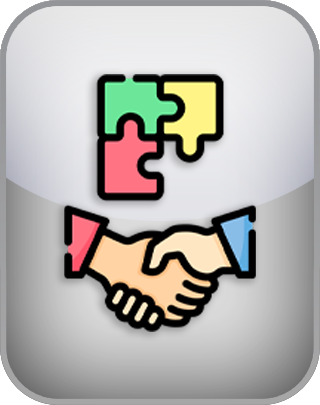Social Value Orientation Test
The Social Value Orientation Test, inspired by research from Paul Van Lange at VU Amsterdam, measures how individuals prioritize outcomes for themselves and others in social interactions. Unlike general personality tests, this test evaluates whether you lean toward prosocial (cooperative), individualistic (self-focused), or competitive (dominating) orientations when making decisions. Higher prosocial orientation is linked to better collaboration and trust, while individualistic or competitive orientations may prioritize personal gain. Understanding your social value orientation can enhance teamwork, negotiation, and relationship dynamics.
What is your social value orientation? To take the test, enter your input below.
Question 1 of 20
I don’t care about being better than others in shared tasks.
| Disagree | Agree |
NEXT
The Social Value Orientation (SVO) Test, inspired by the work of psychologist Paul Van Lange at VU Amsterdam, offers valuable insight into how individuals approach decision-making in social contexts. By examining preferences for resource distribution, the test sheds light on how people balance their own needs and interests with those of others. Understanding SVO is critical, as it reveals deep-seated patterns of cooperation, competition, and self-interest that influence interpersonal interactions, group dynamics, and broader societal behavior.
Social Value Orientation refers to the ways in which people prefer to distribute resources—such as time, money, or points—between themselves and others. The orientation is typically classified into three broad types: prosocial, individualistic, and competitive.
- Prosocial individuals prioritize maximizing joint outcomes. They tend to value fairness, mutual benefit, and the well-being of others alongside their own. These individuals are more likely to cooperate and seek solutions that benefit everyone involved.
- Individualistic individuals focus primarily on maximizing their own outcomes. While they may cooperate if it benefits them personally, their primary goal is self-gain, and they tend to avoid situations where they may end up with less than they deserve.
- Competitive individuals strive to maximize their relative advantage over others. In this orientation, winning is not just about gaining more than others, but about outperforming them. This can lead to a zero-sum approach, where one person's gain is another's loss.
The SVO test typically involves presenting participants with various resource-allocation scenarios. For example, individuals may be asked how they would divide a sum of money or points between themselves and a hypothetical partner. Their choices are analyzed to determine whether they exhibit prosocial, individualistic, or competitive tendencies. Through these decisions, researchers gain a better understanding of the individual’s natural inclinations toward cooperation, fairness, or self-interest.
Understanding your Social Value Orientation can provide significant insights into your behavior and decision-making patterns, both in personal and professional contexts. Prosocial individuals are often more successful in environments that require collaboration, trust, and teamwork, such as workplaces or community settings. Their ability to put collective well-being above individual gain fosters an atmosphere of cooperation and shared success.
On the other hand, those with an individualistic or competitive orientation may thrive in settings that reward personal achievement or negotiation skills. In high-stakes environments, they can excel at securing their own interests. However, if overly self-focused, their tendencies might strain relationships, as others may perceive them as selfish or unwilling to cooperate for the common good.
The SVO Test is widely applicable across various fields. In organizational settings, understanding team members' social value orientations can help managers create well-balanced, effective teams. For instance, pairing prosocial individuals with more individualistic or competitive types may foster a productive dynamic where each member’s strengths complement one another. In therapy or counseling, the test can reveal underlying barriers to cooperation or communication in relationships, helping individuals and couples understand and work through challenges.
In the realm of education, the concept of SVO can be leveraged to teach students about empathy, cooperation, and conflict resolution. Understanding that people have diverse social preferences helps cultivate a classroom environment where collaboration and mutual respect are prioritized.
Additionally, the SVO test challenges the assumption that humans are always motivated by self-interest. While many individuals do seek to benefit themselves, it highlights that the human capacity for cooperation is strong and that social preferences are diverse. Recognizing and embracing these differences can enhance social interactions and create more harmonious environments.
In summary, the Social Value Orientation Test, based on Paul Van Lange’s groundbreaking research, offers valuable insights into how individuals prioritize outcomes for themselves and others. By revealing an individual’s approach to social decision-making, it helps to better understand interpersonal dynamics and navigate both personal and professional relationships. Its applications are broad, spanning workplace strategies, relationship counseling, and educational initiatives, making it a powerful tool for improving cooperation, empathy, and social understanding.

